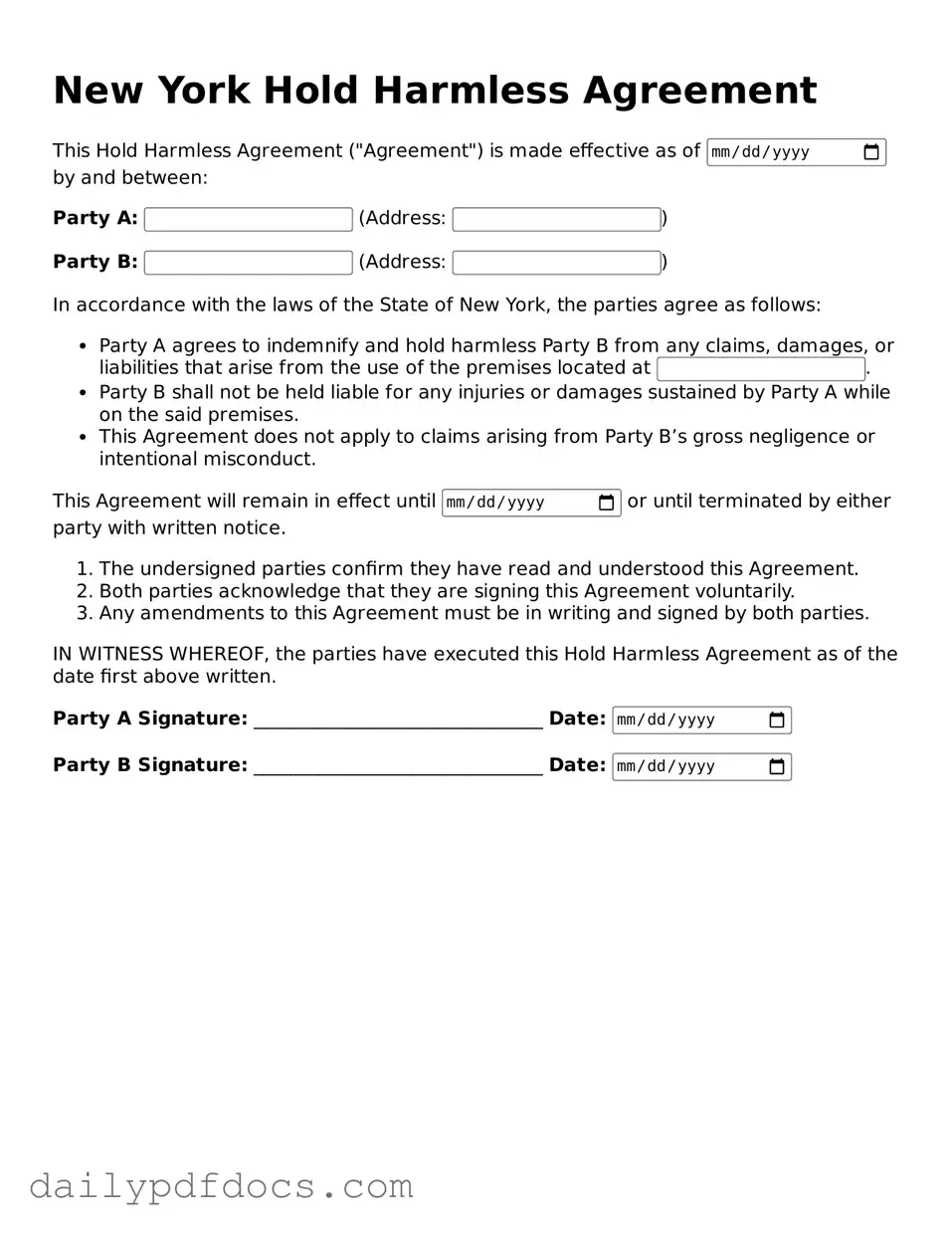What is a Hold Harmless Agreement?
A Hold Harmless Agreement is a legal document in which one party agrees to assume the liability and protect another party from any claims, damages, or losses that may arise during a specific activity or event. This type of agreement is often used in various contexts, such as construction projects, events, or rental agreements, to ensure that one party will not hold the other responsible for certain risks or liabilities.
Why is a Hold Harmless Agreement important in New York?
In New York, Hold Harmless Agreements are particularly significant because they provide a clear understanding of liability between parties. They help protect businesses and individuals from financial loss due to accidents or injuries that may occur during an event or project. By having this agreement in place, parties can avoid lengthy legal disputes and ensure that responsibilities are clearly defined.
Who should use a Hold Harmless Agreement?
Any individual or organization that engages in activities where there is a risk of liability should consider using a Hold Harmless Agreement. This includes event organizers, property owners, contractors, and service providers. For example, if you are hosting an event at a venue, you may want to ask the venue owner to sign this agreement to protect yourself from potential claims related to accidents that may occur during the event.
What are the key components of a Hold Harmless Agreement?
A typical Hold Harmless Agreement includes several important elements. First, it identifies the parties involved. Next, it outlines the specific activities or events covered by the agreement. The document also specifies the extent of liability that is being waived and may include any exceptions to the agreement. Finally, signatures from both parties are essential to validate the agreement.
Can a Hold Harmless Agreement be enforced in New York?
Yes, Hold Harmless Agreements can generally be enforced in New York, provided they are drafted clearly and comply with state laws. However, there are limitations. For instance, a party cannot be held harmless for their own gross negligence or willful misconduct. It is crucial to ensure that the language used in the agreement is precise to avoid any potential legal challenges.
How do I create a Hold Harmless Agreement?
Creating a Hold Harmless Agreement can be straightforward. You can start by outlining the parties involved and the specific activities covered. It is advisable to include clear language about the extent of liability being waived. While templates are available online, consulting with a legal professional is recommended to ensure that the agreement meets your specific needs and complies with New York laws.
What should I do if someone refuses to sign a Hold Harmless Agreement?
If someone is hesitant to sign a Hold Harmless Agreement, it’s essential to understand their concerns. Open communication can help clarify the purpose of the agreement and its benefits. If they still refuse, you may need to assess the risks involved in proceeding without the agreement. In some cases, it may be necessary to reconsider the arrangement or seek alternative solutions to mitigate potential liabilities.
